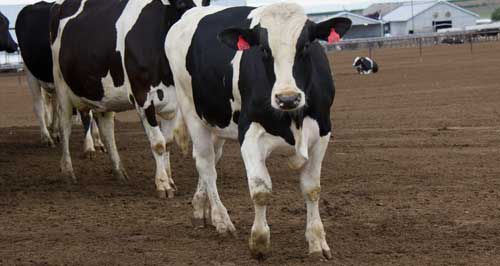
In our interactions with dairy producers, especially those who study their dairy genetics closely, there have been fairly steady murmurs regarding somewhat exaggerated genetic evaluations among young genomic bulls. After reviewing a study conducted by Lyle Kruse and Chuck Sattler, both of Select Sires, there is a firmer foundation for those beliefs.
Before discussing the spread in genetic predictions between bulls with milking daughters and those with genomic-only evaluations, let's address the fact that genomic evaluations do a very good job of sorting out the best young bulls amongst their peer groups. Within Select Sires, there were 329 young bulls sampled throughout 2009. Of the 31 bulls that graduated the stud's sampling program (after they had milking daughters), 44 percent came from those with the top 10 percent of genomic predictions (90th percentile); another 18 percent from the 80th percentile; and 12 percent from the 70th percentile. That means 74 percent of the graduates came from just 30 percent - the top 30 percent - of the young bull population at Select Sires. A similar story can be written at other A.I. studs, as well.
While genomics has done a good job ranking bulls in peer groups, it still isn't perfect. When looking at the entire Holstein population, one needs to prepare for a slightly more adventurous roller-coaster ride when using genomic bulls versus those that have milking daughters in their genetic evaluations.
In the study by Kruse and Sattler, they compared two groups of bulls. The top 100 Holstein bulls with daughters and the top 100 Holstein young sires. Remember, both groups had genomic predictions. The only difference was the top 100 young sires had no milking daughters.
To complete the study, Kruse and Sattler compared these same two groups from April 2010 to their December 2013 genetic evaluations. Here is what they found:
• Change in TPI: Proven bulls, -28 TPI points; Young Sires, -203 TPI points
• Proven Bulls TPI: April 2010 - 1,937; December 2013 - 1,909
• Young Sires TPI: April 2010 - 2,154; December 2013 - 1,951
While the young sire group still held a slight the lead in TPI rank, the same did not hold true in Net Merit (NM$) among the top 100:
• Change in NM$: Proven bulls, -9 NM$; Young Sires, -151 NM$
• Proven bulls $NM: April 2010 - 492; December 2013 - 483
• Young sires $NM: April 2010 - 620; December 2013 - 468
We could go through each of the individual traits and the story would be similar to the TPI tale: Genomic bulls lost more ground but still slightly outranked their older counterparts.
Moving forward, everyone must remember that genomic evaluations are similar to those of proven bulls in the late 1970s and 1980s when progeny test programs were first becoming commonplace. In that era, it was typical to have 30 or so milking daughters behind first-proof bulls and reliabilities in the 70 percent range. That led to some of the same fluctuations among those bulls that we see in genomic-only evaluations because the reliabilities are quite similar. As research improves, scientists will continue to iron out wrinkles in genomic predictions.
In the meantime, what should a dairy producer do when making a choice between proven bulls or those younger sires with genomic-only evaluations?
"Producers focused on young sire use (genomic-only evaluations) need to include two to three times more bulls and use higher standards to be sure to capture the same genetic superiority that progeny-proven sires provide," said Chuck Sattler.
Evaluation changes are unavoidable for both progeny-proven and genomic young sires. However, it's important to realize that PTA values for genomic young sires are likely to decline as daughters are added to their evaluation. Here are a few thumb rules to help manage the situation:
- Young bulls, sired by proven sires, need to be 700 NM$ or higher (2250 GTPI or higher) to be comparable to today's proven sires.
- Young bulls, sired by young sires, need to be 775 NM$ (2350 GTPI or or higher) to be comparable to today's proven sires.








